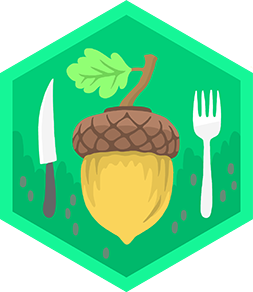Hunt for edible mushrooms
Go on a supervised mushroom hunt using a field guide, photograph and identify fungi, record locations, and only eat mushrooms confirmed safe by an expert.



Step-by-step guide to hunt for edible mushrooms
5 Edible Wild Mushrooms you can Easily Identify
Step 1
Collect your field guide; notebook; pencil; basket or paper bag; small knife; and map or compass and put them in one place.
Step 2
Ask a grown-up to come with you and agree on a safe time and place for the mushroom hunt.
Step 3
Read the field guide pages about poisonous mushrooms and the key ID features with the grown-up.
Step 4
Put on closed-toe shoes and long pants to protect your feet and legs.
Step 5
Walk to the chosen location with the grown-up and stay within sight of them at all times.
Step 6
When you spot a mushroom, take clear photos of it from above and from the side before touching it.
Step 7
Write the mushroom’s location in your notebook using a map reference or nearby landmarks and note the date.
Step 8
With the grown-up’s help cut a small sample from the base of the mushroom and place it in your basket for ID only.
Step 9
Do not taste or eat any wild mushroom at any time.
Step 10
Wash your hands or use hand sanitizer after handling mushrooms.
Step 11
Show your photos and samples to a local mushroom expert or mycology group and get clear written confirmation before you ever consider eating one.
Step 12
Share your mushroom photos notes and what you learned on DIY.org.
Final steps
You're almost there! Complete all the steps, bring your creation to life, post it, and conquer the challenge!


Help!?
What can we use if we don't have the small knife or a basket from the materials list?
If you don't have the small knife or basket from the instructions, use clean scissors or a pocket mushroom blade with a grown-up's permission and place samples in separate paper bags or a ventilated rigid container instead of a basket.
What should we do if our photos are blurry or we're afraid of cutting the mushroom wrong?
If photos are blurry or you're worried about cutting, have the grown-up steady the camera and take several clear photos from above and the side (include a ruler for scale), and cut only a tiny sample from the base as the instructions say.
How can we adapt the hunt for different ages?
For younger children skip cutting and focus on taking photos and drawing in the notebook with landmark-based location notes, while older kids can use the map or compass, read the field guide's poisonous-mushroom pages with the grown-up, and record precise map references.
How can we extend or personalize the mushroom-hunting activity after the hunt?
To extend the activity, compile your notebook notes and photos into a labeled DIY.org project or a laminated find-map with dates and then show samples and photos to a local mycology group for written IDs as instructed.
Watch videos on how to hunt for edible mushrooms
Identifying edible mushrooms. Sparassis crispa - Cauliflower mushroom.
Facts about mushroom foraging for kids
⚠️ Hundreds of mushroom species are poisonous and a single identification mistake can be dangerous — always get expert confirmation before eating.
📸 Clear photos of the cap, gills (or pores), stem, and habitat help experts identify mushrooms accurately.
🗺️ Many foragers record GPS coordinates or mark maps because certain edible mushrooms return to the same spots year after year.
🔬 Mycology is the study of fungi — fungi are actually more closely related to animals than to plants.
🍄 Some mushrooms can grow several centimeters in a single day, appearing almost overnight.
How do I conduct a supervised edible mushroom hunt with my child?
What materials do I need for a family mushroom hunt?
What ages is a supervised mushroom hunt suitable for?
What safety steps should families follow when foraging mushrooms?


One subscription, many ways to play and learn.
Only $6.99 after trial. No credit card required



